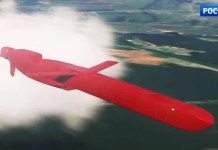The US Army successfully deployed its cutting-edge Stryker-mounted 50-kilowatt laser prototypes in Iraq at the end of October, marking a key milestone in its air defense capabilities in the region.
According to Janes, this development was disclosed on the opening day of the SAE Media Group’s Future Armored Vehicles Survivability (FAVS) 2024 conference in London, which will run from November 11 to 13.
The system, known as the Directed Energy Maneuver Short-Range Air Defense (DE M-SHORAD), incorporates a 50-kilowatt RTX laser onto a Stryker vehicle, allowing it to defend against various aerial threats.
The laser-equipped platform can neutralize class one to three drones, rockets, artillery, and mortars. The initial production yielded four prototype vehicles assembled into a platoon and delivered to the US Army in September 2023.
In February 2024, these prototypes were deployed to the US Central Command (CENTCOM) area of operations, where they were further tested in field conditions.

Colonel Steven Gutierrez, project manager for DE M-SHORAD at the US Army’s Rapid Capabilities and Critical Technologies Office (RCCTO), described the deployment process involving air transport via a C-17 aircraft.
Images displayed at the conference depicted the system being loaded into the aircraft, underscoring the platform’s air mobility and transport certification.
The DE M-SHORAD underwent a rigorous Army Test and Evaluation Command (ATEC) assessment in June. During the trials, it demonstrated a 100% success rate, shooting down all 15 target drones.
However, Col. Gutierrez refrained from confirming whether the system had engaged any hostile unmanned aerial vehicles in combat operations.
The DE M-SHORAD’s durability was also tested under real-world conditions, with in-theater maintenance supported by an ISO-5 cleanroom for on-site diagnostics and repairs—demonstrating its self-sufficiency in austere environments.
While the June tests provided promising results, more analysis will be done to determine potential adjustments that could further enhance the DE M-SHORAD’s operational effectiveness. These insights are anticipated to shape future technology upgrades and acquisition strategies.
Pentagon Accelerates Development Of Directed Energy Weapons
The Pentagon has been working on directed energy weapons for several years. Still, the increasing prevalence of low-cost aerial drones has spurred a sense of urgency to field these advanced technologies.
With drones becoming a serious threat on modern battlefields, such as in Ukraine and the Red Sea, defense leaders are seeking efficient, cost-effective ways to counter these threats and reduce the rising costs of traditional missile interceptors.
The growing number of drone attacks, particularly in the Middle East, has placed additional pressure on US military forces, particularly Central Command (CENTCOM), which has faced multiple drone assaults on US installations.
These threats come at a high financial cost, with kinetic interceptors often costing millions of dollars per intercept. In response, the Pentagon is exploring alternatives, including directed energy systems like the Directed Energy Maneuver Short-Range Air Defense (DE M-SHORAD), to lower the per-unit kill cost and offer commanders more options depending on the nature of the threat or weather conditions.
The DE M-SHORAD, which integrates a 50-kilowatt RTX laser onto a Stryker vehicle, is part of a broader effort to deploy directed energy solutions. Alongside the DE M-SHORAD, the US Army has been fielding a variant of the Stryker called the M-SHORAD, now known as the Sgt. Stout.

This system is armed with a mix of Stinger heat-seeking missiles, radar-guided AGM-114L Hellfire missiles, an XM914 cannon, and advanced radar systems. The vehicle is named in honor of Sgt. Mitchell William Stout, a Medal of Honor recipient who sacrificed his life during the Vietnam War.
The M-SHORAD and DE M-SHORAD vehicles are part of the Army’s overall M-SHORAD program, which includes multiple increments aimed at enhancing short-range air defense capabilities.
Increment 3 focuses on replacing the Stinger missile, while Increment 4, outlined in May, calls for a lighter system that can be air-dropped or transported by helicopter to support airborne operations.
This could include a 4×4 Joint Light Tactical Vehicle (JLTV), an uncrewed ground vehicle, or a hybrid configuration. Potential armament options for Increment 4 include Raytheon’s Coyote counter-drone interceptor, APKWS II, and the XM914 cannon.
In addition to the M-SHORAD efforts, the Army has been expanding its Mobile, Unmanned Aircraft Integrated Defeat System (M-LIDS), which incorporates various components such as Coyote interceptors, XM914 cannons, and electronic warfare systems.
The Army is now moving toward consolidating M-LIDS into a single Stryker platform, blurring the line between the M-LIDS and M-SHORAD systems as both work toward countering the growing drone threat.
As the Army moves forward with these developments, the potential for directed energy weapons to become a mainstay in counter-drone operations is becoming increasingly clear.
- Contact the author at ashishmichel(at)gmail.com
- Follow EurAsian Times on Google News




